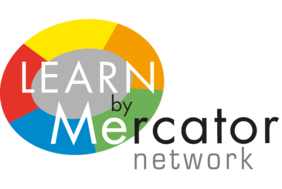17-19 September 2015: LEARNMe Conference in Budapest
International conference of the LEARNMe project, organised by the Research Institute for Linguistics of the Hungarian Academy Science, one of the Mercator Network partners.
Central aims are to present the White Paper with the main outcomes of the project, to expand on topics deserving more attention, and to bring together researchers, policymakers and other stakeholders to discuss the scholarly and practical challenges of multilingualism in Europe.
Among the speakers will be Dr Tibor Navracsics (European Commissioner for Education, Culture, Youth and Spor
Report by Jorrit Huizinga (Mercator Research Centre)
On 18 and 19 September 2015 the final conference of the Mercator Network’s LEARNMe project took place in Budapest, Hungary. The event was hosted by the Research Centre for Multilingualism of the Research Institute for Linguistics (Hungarian Academy of Sciences). The two-day programme was built around the broad concept of linguistic diversity. Specific focuses were bottom-up approaches to research and on education, learning and access to knowledge for members of linguistic minorities in Central-Europe and elsewhere.
Speakers at the conference came from a wide range of backgrounds. High-level policymakers such as European Commissioner Tibor Navracsics and Hungarian MEP Ádám Kósa were joined by renowned experts and educational practitioners from Hungary and many other European countries. Many attendants considered this diversity to be the defining aspect of the conference. The event provided a unique opportunity to hear in one event the positions of influential politicians, the more theoretical points of view of researchers, and the daily challenges teachers and school administrators face in a multilingual setting.
Another very important novelty was the strong inclusion of sign language in the conference. The combination proved to be enriching and inspiring to both experts of spoken and sign languages. Many of the challenges speakers and teachers of lesser used spoken languages face are very recognizable to the Deaf, and vice versa. The conference organizers hope this combination will be a basis for future cooperation between speakers and researchers of both types of languages.
The conference was also used as a public venue for the discussion of the LEARNMe White Paper. This document on Linguistic Diversity is currently being revised based on the insights gained during the conference, and will be published before the end of the year. The final document will of course be presented in this newsletter.
See: www.learnme.eu.



